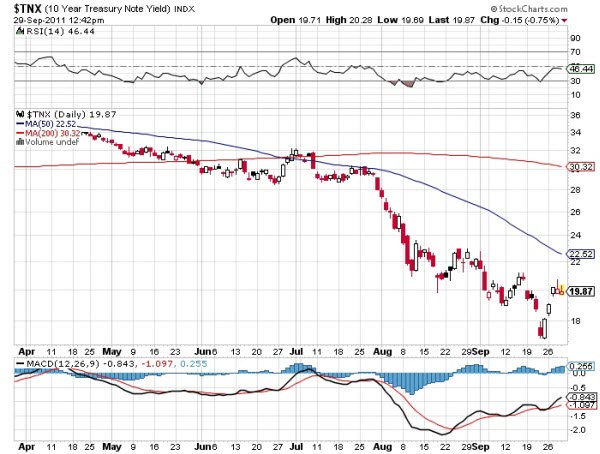After the painful bursting of two bubbles, worries about the state of the global economy, the precarious health of the banking system, and political uncertainty, you may be feeling frustrated with the stock market and looking for the safest place to invest your money. This desire for security has sent investors running for the safety of US treasuries, traditional savings accounts, and good old-fashioned cash.
This could prove to be the wrong strategy, as your quest to find the safest place to invest your money could lead you straight into another bubble built on pessimism and fear. This strategy could be setting you up for massive losses as the economic conditions improve and inflation rebounds, which would erode the value of your bonds and cash holdings.
So how can it be that the equities markets are a safer alternative than traditional “safe-havens” such as US debt, and cash? It all boils down to the strength of corporations and businesses compared to the relative strength of the government. While governments have been laboring under the weight of political and structural problems, businesses are comparatively fine.
The key to finding the safest place to invest your money lies in understanding the roll that inflation will have on your holdings based on your time-frame for investing, as well as your ability to tolerate risk. If you have been waiting on the sidelines and are looking for a way to get back into securities, there are plenty of low-risk strategies for investing in equity markets that are worth considering.
Underlying Strength And Low Valuation Could Make Stocks The Safest Place To Invest Your Money
The fact is that based on the underlying strength of corporations, low valuations, and under-appreciated protection from inflation, stocks are considerably more appealing investment for a long-term investment strategy than US treasuries, and could be the safest place to invest your money for long-term gains.
In light of the very real structural problems plaguing the economy, combined with political gridlock and in-fighting the situation has been awful for both the government and the average working American. Competition from inexpensive foreign labor and an increase in automation have been the primary cause for the malaise of the average worker, and yet the very reason companies are doing so well.
Surging cash flows, and enviable balance sheets with rising assets and falling debt have all led to amazing after-tax profits for the average corporation. For many businesses, labor costs are the main expense, and a lower payroll will contribute to a corporations bottom line by way of a wider profit margin.
The government, on the other hand, is now proving to be a source of economic weakness, with a system mired in gridlock, rising debt burdens, unfunded entitlements, and budget deficits that are out out of control. While households and businesses continue to pay down debt, the federal debt is expected to grow to $20.8 trillion by 2016.
With the US government taking on more risk and debt, US treasuries may not be the safest place to invest your money after all.
Investing For Long-Term Gains With Blue Chip Stocks
Taking a closer look at the real value of assets such as the 10-year Treasury bond – traditionally considered the safest places to invest your money – you can quickly see that with last weeks record low yields of less than 1.7%, the inflation-adjusted return on these investment vehicles is actually in the negative! Bond investors are accepting a return of less than zero to subsidize the government’s debt.

Stocks, by contrast, are traditionally a better hedge against inflation as they typically rise in value along with inflation provided inflation continues to be lower than 5%. As the earnings yield from the S&P 500 Index (INX) is currently at 6.7%, this widens the gap between the real yield on 10-year Treasuries and the earnings yield on the S&P to over 8%.
A focus on large-cap, low-risk, high-dividend stocks could be the safest place to invest your money, as these stocks hold up better than other high-risk securities in bear markets, and tend to follow high-risk stocks to the upside during bull markets.
Traditionally, a portfolio that is comprised of these types of stocks outperform portfolio’s made up of riskier stocks over the long-term.
While the market can remain a scary place for investors, it appears to be the safest place to invest your money for long-term gains and protection from the inevitability of rising inflation.
Comments (No)